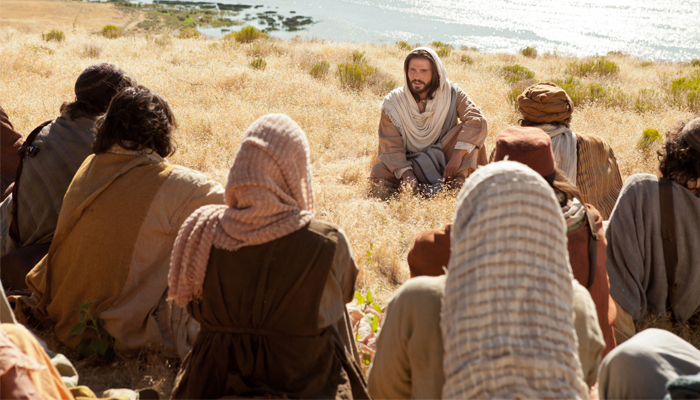
Ever been stumped with a lesson topic? Have you stumbled finding an answer for a class member? Maybe you’ve taught every Sunday for the last few months, but you are struggling to keep your class involved? Christ is our example in everything, so to that end, here are five easy steps to teach like Jesus Christ, the Master Teacher.
1. Know Your Students

One of the primary ways Christ was able to teach so many diverse people is that he loved each and every one of them for the individuals they were. From the Pharisee Nicodemus to woman by the well, Christ personalized His message and His delivery for every student.
When speaking to the woman taken in adultery, the scriptures say,
“When Jesus had lifted up himself, and saw none but the woman, he said unto her, Woman, where are those thine accusers? hath no man condemned thee? She said, No man, Lord. And Jesus said unto her, Neither do I condemn thee: go, and sin no more,” (John 8: 10-11).
How We Can Do It
Christ knows us perfectly, and (un)fortunately, we don’t have that knowledge of one another. When it comes to reaching our students in our lesson, we should try to tailor our delivery and message to our students’ needs.
- We can personally visit our class members (if your class is small).
- If we are too busy to do personal visits, we can try to attend church events like Priesthood or Relief Society meetings, service days, and ward activities to get to know your students.
- We can also spend just a few moments at the beginning of class asking for news from the member’s lives (this works best in children and youth classes).
2. Dig into the Scriptures

The Master Teacher learned from the scriptures in his youth. As a young Jew, He would’ve been taught from the Torah and writings of the Holy Prophets. He would’ve been expected to recite passages of scripture from memory, and He did at multiple times in His ministry.
“Then Jesus said unto them, Verily, verily, I say unto you, Moses gave you not that bread from heaven; but my Father giveth you the true bread from heaven. For the bread of God is he which cometh down from heaven, and giveth life unto the world,” (John 6: 32-33).
Christ also used scripture when Satan tempted him. Christ cited the Old Testament four times by saying, “It is written …” (Matthew 4).
How We Can Do It
To teach like Christ, we can dig into the scriptures by putting time into preparing our lessons—perhaps the Sunday before we teach. Here’s a sample schedule for your preparation.
- Sunday: Read the scriptures that accompany the lesson and start thinking about the overall message of the lesson.
- Monday: Read the scriptures and discuss them with a friend or during FHE with your family.
- Tuesday: Read the entire lesson and start to pray about what content you should focus on for your class.
- Wednesday: Think back on your own life for relevant experiences you could share with the class. Continue praying about your lesson material.
- Thursday: Read pertinent conference talks and search for useful Ensign and Liahona articles. Continue to pray.
- Friday: Mock up a rough lesson plan. Pray about specific parts of the plan your are concerned about.
- Saturday: Add or take away elements and finalize your lesson plan.
- Sunday: Allow the Spirit to guide you as you teach the lesson. Feel free to wander from your lesson plan as directed by the Spirit.
3. Stay in Touch with the Holy Spirit

Christ was in the unique position to have a very close relationship with our Heavenly Father. Christ received instruction, comfort, and strength from his relationship with God. As He went about His ministry, Christ was guided by His Father every step of the way.
“Then answered Jesus and said unto them, Verily, verily, I say unto you, The Son can do nothing of himself, but what he seeth the Father do: for what things soever he doeth, these also doeth the Son likewise,” (John 5:19).
Likewise, when we turn to God in prayer and receive the Holy Spirit, we are guided and strengthened in all good things, including our efforts in our callings. We are entitled to divine inspiration as we prepare and give our lessons to our students.
How We Can Do It
In order to enable the Holy Ghost to inspire you, be sure to:
- Give yourself ample preparation time (see above sample schedule) and a calm state of mind.
- Allow your lesson to follow your promptings and don’t worry about covering all of your material. The Spirit knows who needs to hear what messages.
- Allow the Spirit’s greater wisdom to guide the class.
- Come well-rested to class.
4. Keep up the Dialogue

Christ, the Master Teacher, didn’t only lecture to His students. Along with the great sermons like the Sermon on the Mount, Christ taught people in small, everyday moments. He answered questions from diverse people, ranging from the Sadducees to the lepers.
“Then saith the woman of Samaria unto him, How is it that thou, being a Jew, askest drink of me, which am a woman of Samaria? for the Jews have no dealings with the Samaritans. Jesus answered and said unto her, If thou knewest the gift of God, and who it is that saith to thee, Give me to drink; thou wouldest have asked of him, and he would have given thee living water,” (John 4).
After this exchange, Christ and the woman further discussed what Christ means by living water. As this exchange shows, Christ uses questions and answers to guide His students to correct principles, and He corrects them when they are wrong. He allows His students to come to conclusions on their own by His loving counsel.
How We Can Do It
When we teach each other in our classes, the best way to encourage learning together is by discussing the material you are teaching. In discussion, we are allowed to ponder the material we have just learned and to ask questions that further inform us. Everyone has his or her own perspective on the Gospel, and we can learn from one another in the safe, guided discussions of our lessons.
- Be sure to validate your student’s comments during the discussion. The best way to validate students’ comments is to sincerely thank them for their insights and comment specifically on what they said.
- An exchange could go something like this: Student says, “In His words to the woman taken in adultery, Christ showed that kind of sin is forgivable.” Teacher says, “That’s a great point. Was that different than what the Jews of that time believed? If the woman could be forgiven, can we be forgiven?”
- Never lose the Spirit in your class by allowing the discussion to become contentious or counter-doctrinal.
- Occasionally even good discussion can throw a lesson off-track. Be sure to check out our article about how to bring your derailed lesson back on track, and be sure to check out this video on great teaching techniques.
5. Teach in Stories

One of the teaching techniques Christ is most famous for is his penchant for using parables for teaching complex spiritual principles. He used the parable of the sower, hidden treasure, ten virgins, leaven, lost sheep, good Samaritan, and the list goes on.
“Therefore speak I to them in parables: because they seeing see not; and hearing they hear not, neither do they understand. And in them is fulfilled the prophecy of Esaias, which saith, By hearing ye shall hear, and shall not understand; and seeing ye shall see, and shall not perceive,” (Matthew 13).
He was able to use stories to reach people of all social classes by using symbols that were common among all classes, such as taxes and the struggle to feed families. He also used parables that had many layers, allowing the hearers to gain lessons according to their own spiritual sensitivity.
How We Can Do It
While we might not be able to create such remarkable parables, we can use stories to teach like Christ.
- Draw from our common experiences, such as technology, school, taxes (some things never change), etc. A story about a car accident and a spiritual conversion is something we can all relate to.
- When preparing your lessons, think of any experiences you could share that would inform the lesson for your students and engage them in your discussion. But be sure to think about if your stories will add something valuable to the lesson and will be applicable to your students’ experience.
- One of the major pitfalls in teaching is the tendency to ramble on about our own experience. It seems relevant to you, because you, yourself, learned from it, but others might not see the point (ever heard a person tell a funny story and, without getting any laughs, say “you had to be there”? It’s like that.).
- Additionally, some personal experiences can be too sacred to share in this type of setting. Remember to prayerfully consider your experiences to know if they are right for your students.
As in all things, Christ is our example. The Master Teacher taught with love, compassion, and authority. As you follow these simple steps, you will find yourself growing closer to the Master Teacher’s example.
What things have helped you be a better teacher? What different lessons have you learned from the Master Teacher? What qualities did your favorite teachers have? Share below!





